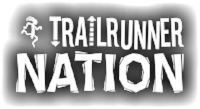SNAPSHOT
PODCASTS = Top Platform for gathering knowledge on running and life!
DIGGING DEEPER
Since 2013 PODCASTS have enlightened, informed, entertained, and challenged me as a runner. Some of my top reads have come from podcast author interviews. The relaxed nature allows for the conversations in the podcast to be realistic and eye-opening. The FREE aspect gives me the opportunity to sample different tenants of our sport. I have learned so much about ultrarunning, strengthening, training connections of different sports, psychology, injury, running form, the health of the Track and Field sport, coaching, etc...
Here are my sports mainstays that fill my queue and ears.
Endurance coaching topics with many author interviews
Old school coaching meets Innovative theory
The insides of elite coaching and the sport of Track and Field/ Cross Country
Ultrarunning conversations galore, you will think you are on a long run with friends
Indepth interviews on life and endurance running
I navigate through the recent episode lists finding those that appeal to me. Often listening to them in the background of my run, drive, or housework.
SOLUTION
Download your device's Podcast app and press play.
Question for YOU
What podcasts do you recommend?



















